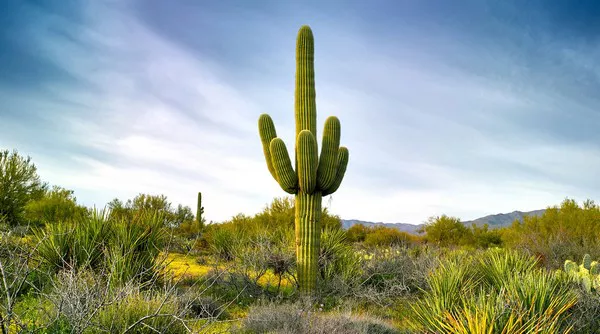Flowers have long been a source of inspiration, conveying sentiments and messages through their colors, shapes, and scents. One captivating aspect of the floral world is its ability to symbolize abstract concepts like freedom.
The Historical Significance of Flowers
Throughout history, flowers have played a significant role in human expression. Cultures across the globe have attributed specific meanings to different blooms, creating a symbolic language that transcends linguistic barriers. As we navigate the realm of symbolism, we discover that certain flowers have been embraced as emblems of freedom, carrying with them the weight of historical events and movements that have shaped societies.
The Poppy: A Symbol of Remembrance and Freedom
The poppy, with its vibrant red petals, holds a special place in the symbolic lexicon of flowers. Widely recognized as a symbol of remembrance for fallen soldiers, the poppy also carries a profound message of freedom. Inspired by the famous World War I poem “In Flanders Fields,” the red poppy serves as a poignant reminder of the sacrifices made for freedom. This resilient flower has become an enduring emblem, not just for those who fought on the battlefield, but for the broader concept of liberty that extends beyond borders.
The Daffodil: A Beacon of Hope and Liberation
In the language of flowers, the daffodil stands as a beacon of hope and liberation. Its bright yellow petals evoke feelings of optimism and renewal. The daffodil’s association with freedom is deeply rooted in its symbolism of the triumph of light over darkness. As this cheerful flower blooms in spring, it symbolizes not only the arrival of a new season but also the emergence of freedom from the shackles of winter. The daffodil serves as a reminder that, like this resilient flower, the spirit of freedom can endure and flourish.
The Lotus: A Symbol of Spiritual Freedom
In Eastern cultures, the lotus flower holds profound spiritual significance, representing purity, enlightenment, and freedom. Rooted in the mud, the lotus rises through the water to bloom in the sunlight—a metaphor for transcending worldly challenges to attain spiritual freedom. Embraced in various religious and philosophical traditions, the lotus stands as a timeless symbol of the human journey toward liberation and self-realization. Its graceful presence in art and literature reinforces the idea that true freedom extends beyond the physical realm.
The Iris: Bridging Realms and Embodying Freedom
The iris, with its striking and intricate blooms, carries a multifaceted symbolism that includes freedom. In Greek mythology, the iris served as a messenger between gods and humans, symbolizing a connection between different realms. This interplay between worlds aligns with the concept of freedom as a bridge between constraints and possibilities. The iris, with its diverse colors, reflects the idea that freedom comes in many forms, catering to the individuality of each person’s journey.
The Sunflower: A Symbol of Resilience and Independence
The sunflower, with its golden petals and towering presence, is a powerful symbol of resilience and independence. Facing the sun as it moves across the sky, the sunflower embodies the pursuit of freedom and personal growth. Its ability to thrive in diverse environments mirrors the human spirit’s capacity to adapt and overcome challenges in the quest for freedom. As a symbol of unwavering strength and individuality, the sunflower resonates with those who strive for autonomy and self-expression.
The Rose: A Timeless Emblem of Freedom and Love
No exploration of symbolic flowers would be complete without the rose. With its timeless beauty and rich cultural significance, the rose encompasses a range of meanings, including freedom and love. In various shades, the rose communicates different aspects of these sentiments. The red rose, in particular, is associated with passion and freedom, representing the courage to pursue one’s desires. The rose’s enduring popularity in art, literature, and ceremonies underscores its role as a universal symbol of freedom and love.
Cultural Perspectives on Freedom Through Flowers
Different cultures interpret the concept of freedom in unique ways, and flowers continue to serve as powerful messengers in these narratives. In Japanese culture, cherry blossoms symbolize the ephemeral nature of life and the transient beauty of freedom. The cherry blossom season, known as Hanami, becomes a celebration of the fleeting yet profound moments of liberation. In Mexican tradition, marigolds are used during Dia de los Muertos to honor deceased loved ones, embodying the belief that the spirits of the departed find freedom during this sacred celebration.
Freedom Gardens: Cultivating Symbolism
Beyond the historical and cultural symbolism, many individuals choose to create “freedom gardens” as a personal expression of their values. These gardens often feature a curated selection of flowers that symbolize freedom, serving as a living testament to the idea that nature itself can embody the essence of liberation. By intentionally cultivating flowers with symbolic significance, individuals transform their outdoor spaces into havens that visually and emotionally resonate with the concept of freedom.
The Language of Freedom: A Call to Action
As we explore the symbolic language of flowers, it becomes apparent that these blooms go beyond mere aesthetics—they become vessels for conveying messages of freedom, hope, and resilience. In a world where the pursuit of freedom is a shared endeavor, the language of flowers serves as a universal call to action. Through the intentional use of symbolic blooms, we can communicate our collective commitment to the ongoing pursuit of individual and collective freedom.
Conclusion
In the intricate tapestry of human expression, flowers have woven themselves into the very fabric of our emotions, values, and aspirations. The symbolism associated with certain flowers extends beyond mere aesthetics; it transcends cultures, histories, and individual experiences. The flowers that represent freedom—from the poppy’s poignant remembrance to the lotus’s spiritual transcendence—encapsulate the multifaceted nature of liberation. As we continue to appreciate the language of flowers, let us not only admire their beauty but also recognize the profound messages they convey about the enduring human quest for freedom.


